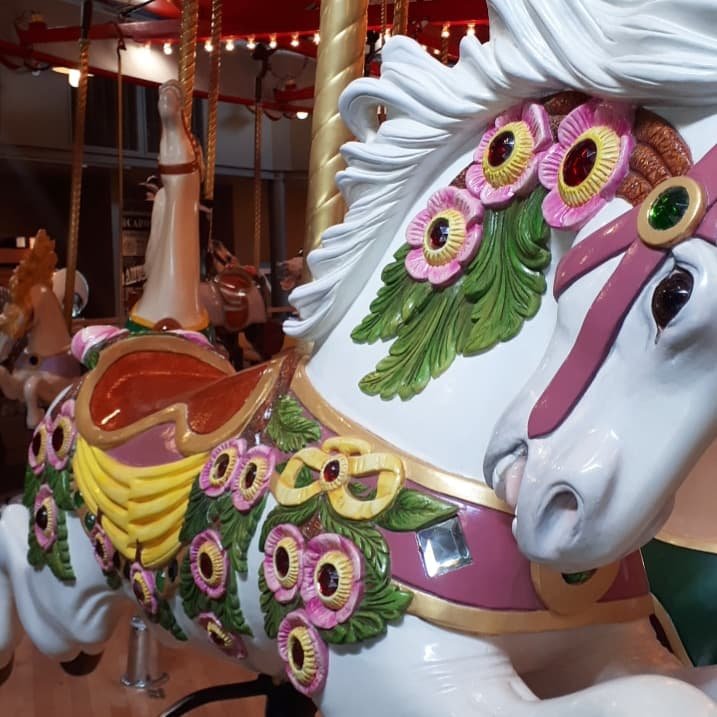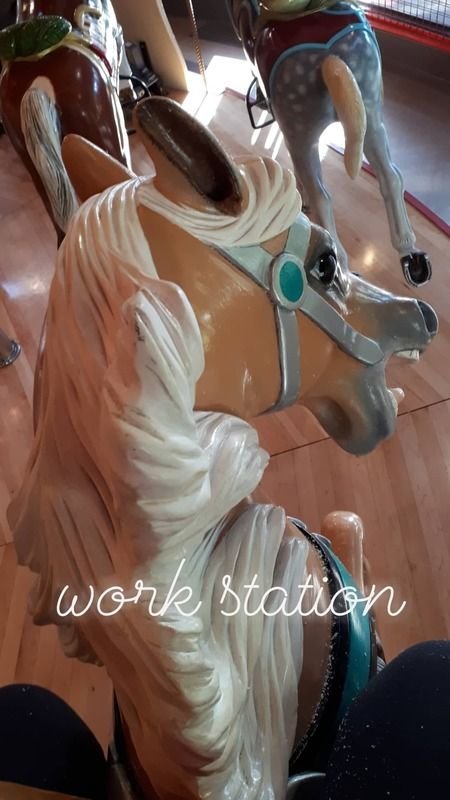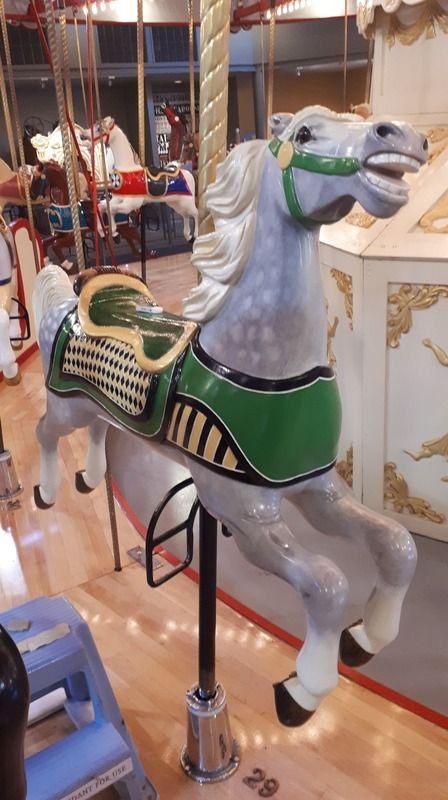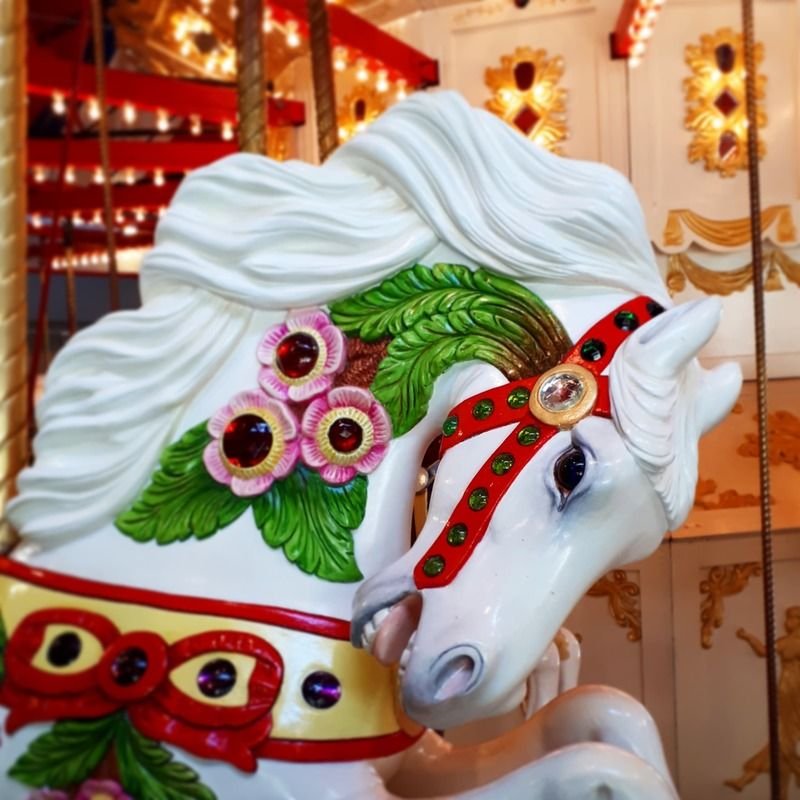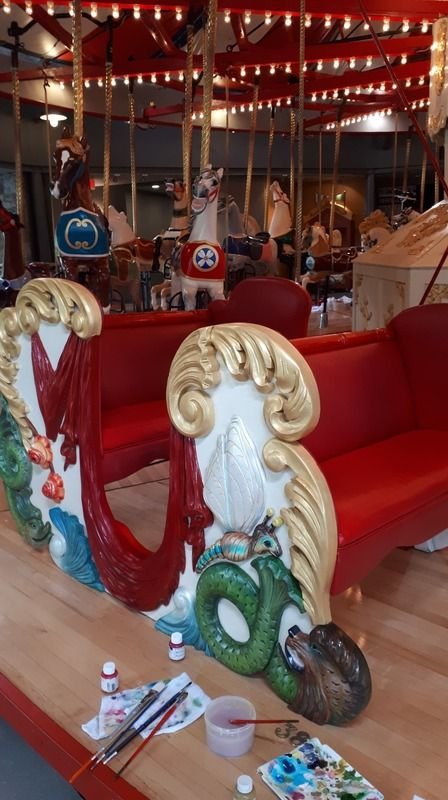Carousel Horse Whisperer
In 2018, I accepted an Exhibit Preparator role at the Burnaby Village Museum. I saw the job call early in the summer and I immediately knew it was for me. The job required advanced artistic skills and a background in museums and curatorial science. I pursued it and got the position!
Although it is only been a few months, I can see that my job with the museum will be diverse and creative and, of course, rooted in the historical representation of the 1920's era upon which the museum is based.
Although my work thus far has been as varied as illustration, signage painting and re-installing exhibits after the Hallmark movie has shot and gone, my work for Burnaby Village does have one primary focus which is the twice-annual preservation and restoration of the Museum's 1912 C.W. Parker carousel.
Twice a year, the museum undertakes a restoration process where the carousel horses are brought back to the level of detailed embellishment that the public loves and has become accustomed to. This process involves first identifying and removing all the damaged and weak areas where the paint is becoming worn or too soft. Soiled varnish from the yearly 100,000+ visitor’s hands, as well as the elements, must be removed carefully and only where it is necessary.
Next, we follow a giant recipe book of specific established colors and glazes based on the original painted update which was completed by the Friends of the Carousel in the late 1980's - 1993
Finally, the fresh paint must be varnished and the whole thing needs to set before the carousel is operational.
The following is a snippet of the carousel's history written by our Curator, Lisa Codd
The Parker #119 was the 119th carousel built by Charles Wallace Parker. He built up his own amusement ride and game enterprise (founded in 1892) in Abilene, Texas. At its peak around 1917, his factory was producing a carousel a week.
In 1936, the #119 ended up in “Happyland” at Hastings Park in Vancouver. In 1957 it was moved to Playland, where it operated until 1990.
In 1988, Venus Solano, a worker at the PNE learned that the carousel was going to be dismantled, and its horses sold at auction. She helped to create a “Friends of the Carousel” association, who raised the money to purchase and restore the machine. The Friends completed the restoration in a warehouse provided by the Municipality of Burnaby. In 1993 the restored carousel opened again to the public, housed in a purpose-built pavilion at the Burnaby Village Museum.
You may read more about it here.
The process of working on the carousel could be described as long, delightful, whimsical and occasionally uncomfortable. Many, many hours of meticulous labor are required before the new paint can even be applied to the horses. As I mentioned, in the areas which have received wear and tear, old paint and stained varnish must be removed first. Perhaps it is difficult for the average person to understand how such extensive maintenance might be necessary, but when you consider that many, many sun screened and ice cream covered hands and rainy Vancouver legs are riding these horses year-round, then you can imagine that the cumulative wear and tear does add up. Coming from my small museum background, it was certainly difficult for me to understand the full scope of how many people actually ride the carousel every year.
Regardless, the work is quite lovely. It's quiet, meditative and due to its ongoing use, its restoration is completed on a somewhat budgeted timeline in comparison to say a large fresco that could take months to restore.
It's neat to see the results of your efforts in only a few weeks' time.
Its extraordinary to me and exciting and inspiring that both the City of Burnaby and the museum itself has chosen to set the precedent for such specific care for the Carousel and all of Burnaby Village.
It is a wonderful place and one that you must visit.
